by bria4123 on January 3, 2013
Yes, writing “Pho Of Faiths” in the title is as imaginative as writing a blues song that begins with “Got busted for somethin’ I didn’t do.” But I think it conveys some truth.
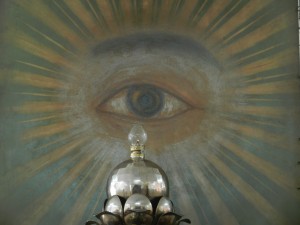
Cao Dai was founded in the 1920’s as a univeral faith, but it also reveals interesting things about Vietnamese culture. [click to continue…]
by bria4123 on January 2, 2013
I’ll continue my New Year’s fireworks with another little-known mixture of 2 vibrant cultures you won’t hear about in many classrooms.
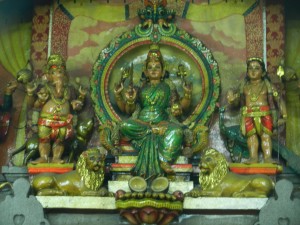
I didn’t know much about it either before I entered Ho Chi Minh City’s main Hindu temple. [click to continue…]
by bria4123 on January 1, 2013
India and Africa are two huge lands with exuberant cultures. Their people have regularly encountered each other since the Middle Ages or before.
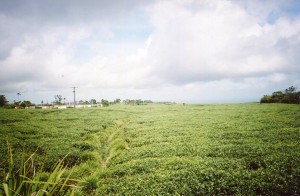
We’ll explore some of their fusions in this post. [click to continue…]
by bria4123 on January 1, 2013
I’ll continue the New Year’s fireworks in this blog by exploring more cultural patterns that most people consider exotic. Studies of Indian and African cultural blends are growing–as both economies grow and their people do more business with each other and exchange art and pop culture, this will be an increasingly vibrant field.
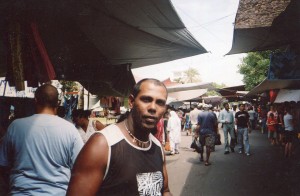
It’s already more prolific than most people realize. [click to continue…]
by bria4123 on January 1, 2013
In my last morning in Mauritius, I explored one of the narrow roads of a small town between Tamarind Bay, where I had stayed, and the airport. Small Christian shrines in front of homes, bright Hindu temples and the call to prayer from the local mosque blended with softly colored houses surrounded by greenery.
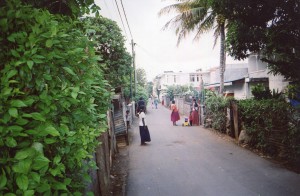
Several children played in the streets. A bald Afro-Mauritian man who looked about 50 stood in front of his house and we greeted each other. I walked on for a few minutes, savoring one last immersion in the island’s dances of colors, faiths and friendly people. I then turned back to ensure enough time to reach the airport. [click to continue…]
by bria4123 on December 31, 2012
Hindu temples emblazon Mauritius. Many rise from sugarcane fields and project brightly painted gods in all directions. These shrines seem to empower the vegetal growth around them.
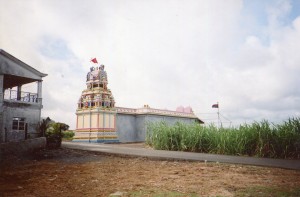
But Indian traditions in Mauritius reflect the island’s natural and cultural landscapes as much as they do their ancient homeland. [click to continue…]
by bria4123 on December 31, 2012
Mauritius’ capital city, Port Louis, is a great sight from the fort which the British ruled from in the 19th century. Mountains, office buildings and ocean complement each other. Everything’s balanced.
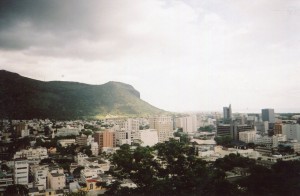
Nothing’s so big that it dominates the landscape. Things seem to dance together. [click to continue…]
by bria4123 on December 31, 2012
Mauritius looked like paradise from my window as my plane flew over it–a rolling carpet of light green sugar cane fields punctuated by jagged mountains and surrounded by sparkling ocean.
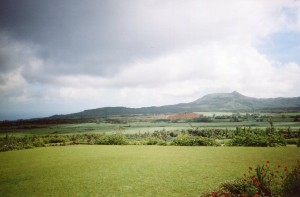
It seemed like a pristine Hawaii before the 1960’s tourist boom. Mark Twain thought it was paradise on earth during his round-the-world trip. I found Mauritius’ cultural landscape just as enchanting. [click to continue…]
by bria4123 on December 31, 2012
Actually this is a long flight. I was attracted to Mauritius because it’s on the other side of the world from California, where I live. And it’s known for eclectic and tolerant blends of cultures, like my home turf. So I felt both kinship and mystery about the most distant inhabited place in the world.
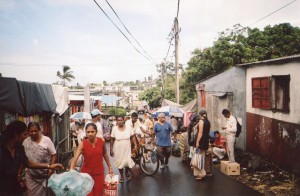
Mauritians value intimacy. A tourists’ guidebook said that the people will bare their souls to anyone who wants to talk to them. The soul baring began as soon as my plane took off on the flight from Kuala Lumpur, Malaysia to the small island off of Madagascar’s east coast. [click to continue…]
by bria4123 on December 31, 2012
Here’s a cool way to begin the new year–widening our horizons by exploring cultural crossroads that most people don’t know about.
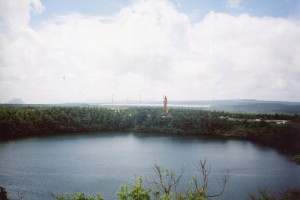
This photo’s from the other side of the world from my home in California. It’s from the beautiful island of Mauritius. Many Indians came to Mauritius as laborers in the 19th century when it was a British colony. Gandhi was appalled when he visited the island and found them living in dirt hovels. But many worked hard and became increasingly wealthy, and they’re now Mauritius’ most influential ethnic group. They transposed their Hindu faiths to the island, and India’s traditional religions and Mauritius’ natural landscape have blended in many ways. [click to continue…]










